- About us»
- Net income calculator»
- Population aging»
-
- Least developed regions»
-
- Average wage
- Material need benefits
- Meal allowance
- Counties of Slovakia
- Inflation
- Living and Subsistence Minimum
- Unemployment of Czechia and Slovakia
- NACE Classification
-
- Life expectancy
- Gender differences
- Youth unemployment and NEET
- Minimum wage in EU
- Unemployment rates of different age groups
- Share of salaries on GDP
- Long term unemployment
- NEET
- Unemployment rate
- Percentage of employees ususally working at nights
- Employment rate
-
- Bratislava and surroundings
- Kopanice
- Danube river
- lower Vah river
- middle Vár river
- upper Nitra river
- lower Nitra river
- Mining cities
- Kysuce a Orava
- upper Vah river - Liptov
- Spiš cities
- upper Hron river
- Juhoslovenská kotlina
- Košice fold and Torysa river
- upper Zemplín
- lower Zemplín
- EU regions
- NUTS3 regions of Slovakia
- LAU1 dataset
-
- Projects and activities
- Inclusive growth»
- Good work
- Project SKRS
- Social system – reality and vision
- Library
-
- Education of unemployed
- Young unemployed not taking part in education
- Proposal to change the system of education funding
- News»
- Contact
Wrocław – PL514
EU regions: Poland > MAKROREGION POŁUDNIOWO-ZACHODNI > Lower Silesian Voivodeship > Wrocław
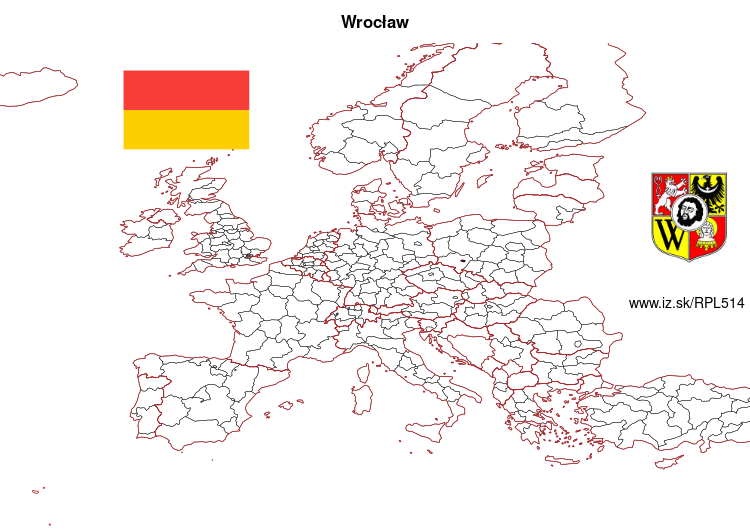
| Indicator | Period | Value |
|---|---|---|
| Gross domestic product | ||
| GDP per capita in PPS of EU average | 2022 | 118 |
More on wikipedia wikidata Q1799 on OpenStreetMap Wrocław slovensky: PL514
Unemployment
| Indicator | Period | Value |
|---|---|---|
| Unemployment according to labour offices | ||
| number of registered unemployed | October 2025 | 9010 |
| number of unemployed women | October 2025 | 4315 |
| number of long-term unemployed | October 2025 | 2472 |
| number of vacancies | October 2025 | 883 |
Comparison of unemployment according to ILO methodology and registered unemployment yields some differences.
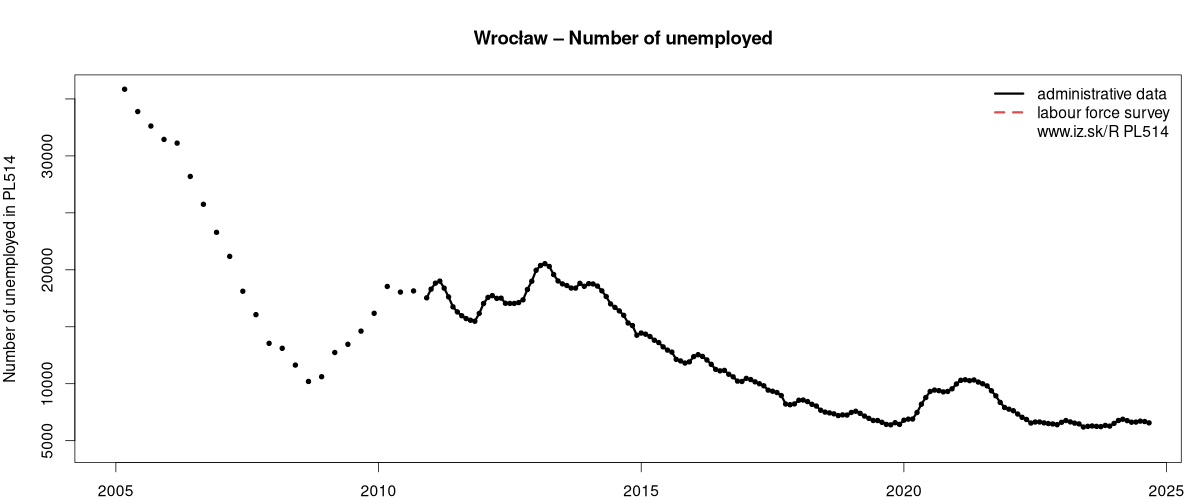
Data on unemployment in counties of Wrocław are available at Local Administrative Units data of Visegrad countries.
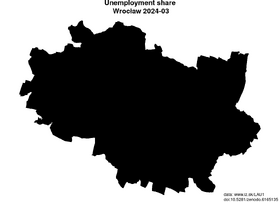
Demographics
| Indicator | Period | Value |
|---|---|---|
| Demographics | ||
| number of inhabitants | 2024 | 670 892 |
| population density | 2023 | 2346.3 |
| old-age dependency ratio | 2024 | 31 |
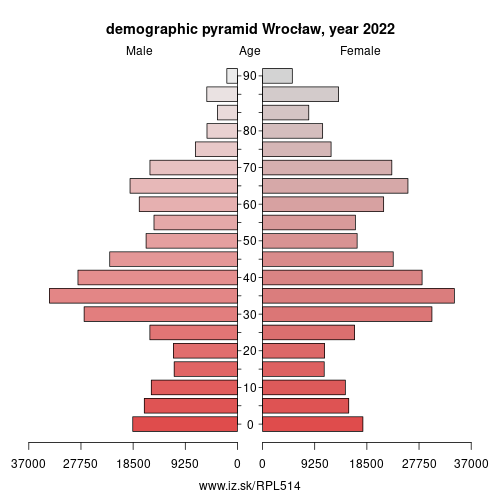
Wrocław (UK: , US: , Polish: [ˈvrɔtswaf] (listen); German: Breslau [ˈbʁɛslaʊ] (listen); Czech: Vratislav; Latin: Vratislavia) is a city in western Poland and the largest city in the historical region of Silesia. It lies on the banks of the River Oder in the Silesian Lowlands of Central Europe, roughly 350 kilometres (220 mi) from the Baltic Sea to the north and 40 kilometres (25 mi) from the Sudeten Mountains to the south. The population of Wrocław in 2018 was 640,648, making it the fourth-largest city in Poland and the main city of the Wrocław agglomeration.
Wrocław is the historical capital of Silesia and Lower Silesia. Today, it is the capital of the Lower Silesian Voivodeship. The history of the city dates back over a thousand years, and its extensive heritage combines almost all religions and cultures of Europe. At various times, it has been part of the Kingdom of Poland, Kingdom of Bohemia, Kingdom of Hungary, Habsburg Monarchy, Prussia and Germany. Wrocław became part of Poland again in 1945, as a result of the border changes after the Second World War, which included a nearly complete exchange of population.
Wrocław is a university city with a student population of over 130,000, making it one of the most youthful cities in the country. Since the beginning of the 20th century, the University of Wrocław, previously Breslau University, produced 9 Nobel Prize laureates and is renowned for its high quality of teaching.
Wrocław is classified as a Gamma-global city by GaWC. It was placed among the top 100 cities in the world for the quality of life by the consulting company Mercer and in the top 100 of the smartest cities in the world in the IESE Cities in Motion Index 2019 report. Wrocław also possesses numerous historical landmarks such as the Main Market Square, Cathedral Island and the Centennial Hall, which became a UNESCO World Heritage Site.
Other: Lower Silesian Voivodeship, Legnicko-głogowski, Wrocław, Jeleniogórski, Wałbrzyski, Wrocławski
Neighbours: Wrocławski
Suggested citation: Michal Páleník: Europe and its regions in numbers - Wrocław – PL514, IZ Bratislava, retrieved from: https://www.iz.sk/PPL514, ISBN: 978-80-970204-9-1, DOI:10.5281/zenodo.10200164
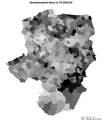
Local Administrative Units data of Visegrad countries
Statistical data on LAU1 regions of Slovakia, Czechia, Poland, Hungary. This LAU1 panel data dataset on 556 regions contains data on population, age structure of inhabitants, on number and structure of unemployed and is regularly updated.. . .
Similar articles
Regions of the European Union, Regions of the Slovak Republic, Changes in the LAU1 dataset, Vacancies, Unemployment structure in the Visegrad region, Local Administrative Units data of Visegrad countries, Labour market indicators of slovak regions., Counties of Slovakia, Unemployment of Czechia and Slovakia

 Share
Share Facebook
Facebook Twitter
Twitter News
News